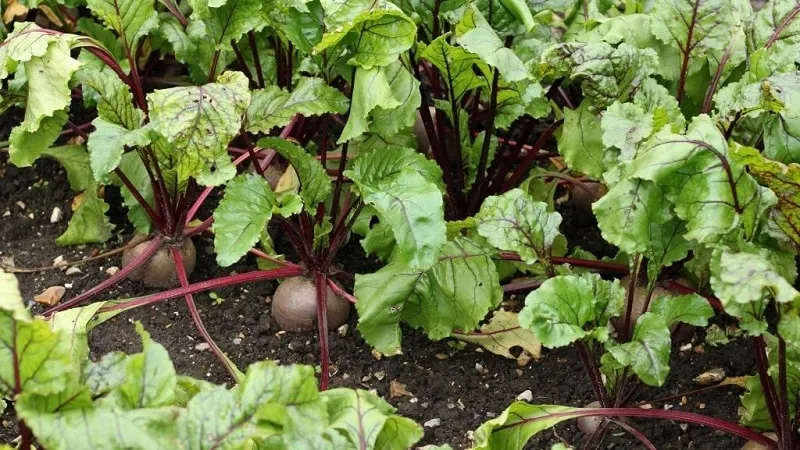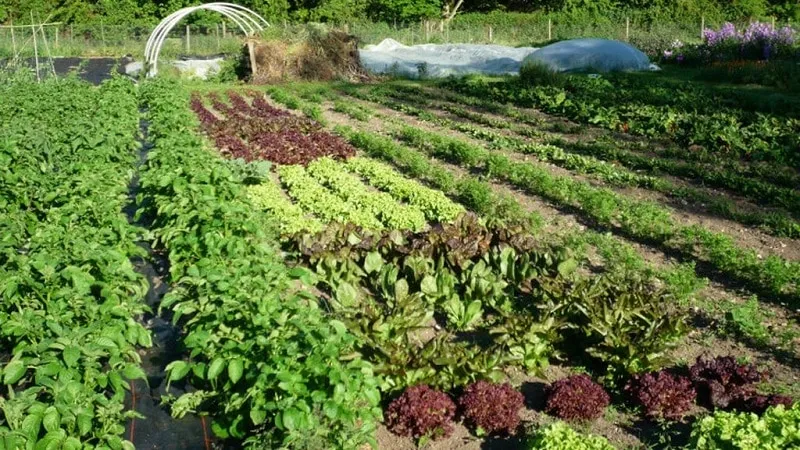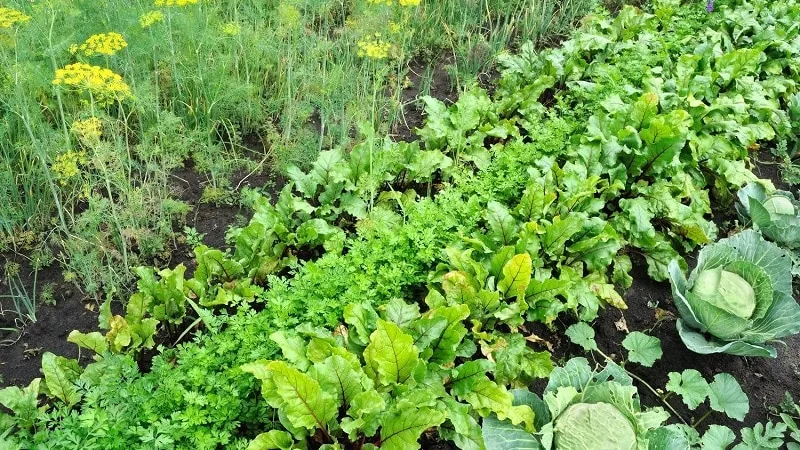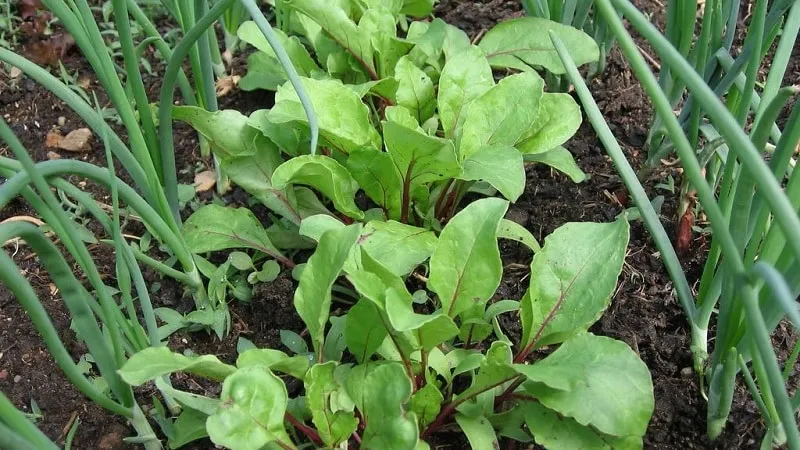Annual planting of the same vegetable crops in the same location depletes the soil, leading to significantly reduced yields. In addition to autumn soil tilling and the application of proper fertilizers, maintaining soil fertility relies on adhering to crop rotation principles. Proper crop alternation protects against diseases and pest infestations.
Table of contents
Crop Rotation Specifics for Beetroot
Beetroot is an easy-to-grow crop cultivated widely across Europe under various conditions. However, there are key considerations to ensure a bountiful and high-quality harvest.

Key agronomic requirements for beetroot cultivation:
- Choose a sunny location for beetroot beds — this affects the vegetable’s color, sweetness, and size.
- Soil acidity is crucial: beetroot struggles in acidic soil (leading to blackened flesh) and overly alkaline soil (increasing scab risk). The ideal pH range is 6.5–7.
- Beetroot requires consistent moisture during seedling establishment or seed germination (depending on planting method). Moderate watering is needed during root development, tapering off near harvest to prevent rot.
- Optimal soil is loam enriched with humus. Heavy clay restricts root growth, while sandy soils lose nutrients too quickly.
- Each plant needs at least 9×9 cm of space for proper development.
What to Plant After Beetroot the Following Year
The core principle of effective crop rotation is alternating plants with different nutrient needs and disease profiles. Beetroot serves as an excellent precursor for legumes (peas, beans), which restore soil micronutrients.
Other suitable follow-up crops include:
- Tomatoes
- Potatoes
- Aubergines
- Pumpkin
- Cucumbers
Note. Can you plant strawberries after beetroot? Yes, but beetroot is a neutral predecessor. Strawberry beds require thorough fertilization after beet cultivation.
Crops to Avoid Planting After Beetroot
Avoid planting carrots after beetroot — both root crops compete for similar nutrients. Carrots will struggle unless the soil is amended with compost beforehand.
Exceptions can be made when no alternative plots exist. In such cases, enrich the soil with compost in autumn.
Ideal Predecessors for Beetroot
Beetroot should follow crops that don’t deplete its required nutrients.
Best predecessors are nightshades:
- Bell peppers
- Aubergines
- Potatoes
- Tomatoes
Prepare these beds carefully by clearing debris and enriching with compost or humus.
Tip. Onions make excellent predecessors for most crops — their essential oils repel many garden pests.

Beetroot also thrives after cucumbers, pattypan squash, and courgettes, as their shallow root systems leave deeper nutrients intact.
Consider planting clover as a green manure on fallow plots — it enriches soil remarkably. Beetroot grown after clover develops exceptional size and sweetness.
Poor Predecessors for Beetroot
Avoid planting beetroot after these crops, as they share similar vulnerabilities and deplete critical nutrients:
- Rapeseed
- Spinach
- Chard
- Carrots
- Cabbage
Companion Planting for Beetroot
Kohlrabi makes an exceptional companion — plant it centrally with beetroot surrounding it. These vegetables mutually enhance growth.
Since kohlrabi matures early, it frees up space for beetroot expansion by midsummer.
Other beneficial neighbors:
- Lettuce
- Parsley
- Radishes
- Asparagus
- Broccoli
- Brussels sprouts

Herbal companions like mint, oregano, and marigolds deter pests effectively. French marigolds combat nematodes, while beetroot itself benefits strawberries and grapes.
Beetroot-carrot adjacency remains debated — while they share nutritional needs, beet foliage may shade carrots excessively.
Poor Companion Plants
Mustard green manure inhibits beetroot growth when planted nearby.
Peppers suffer when adjacent to beetroot, though beetroot remains unaffected.
Maize creates excessive shade, depriving sun-dependent beetroot of critical light.
Note. Avoid planting beetroot near sugar beet, chard, or rye — these combinations create mutual growth inhibition.
Common Mistakes and Consequences
Novice gardeners often over-fertilize, either applying excessive amounts or inappropriate combinations. Such errors can "burn" seedlings or produce nitrate-laden vegetables.
Important! Never plant beetroot (or any crop) in freshly manured beds. Prepare soil in autumn using well-rotted farmyard manure mixed with straw (3–4 kg per m²).

Expert Recommendations
Strict crop rotation observance is paramount for maximizing garden productivity. Ideally, wait 3–5 years before replanting the same crop in a location. Maintain a garden journal documenting planting layouts and fertilization schedules.
For small-scale mixed cultivation, practice strategic interplanting while respecting companion principles. Sketch bed plans annually to track crop positions.
Fertilization Guidelines
Prepare soil well in advance, applying nutrients according to each crop’s requirements and growth stage.
Nitrogen supports leafy growth but becomes detrimental if applied during fruiting stages. Overuse may trigger fungal diseases.
Apply potassium and phosphorus during root development (beetroot, carrots, potatoes) or fruit setting (tomatoes, peppers, aubergines, cucumbers). Incorporate organic matter in autumn for proper decomposition.
For pest control, use approved agrochemicals judiciously. Begin treatments 10–15 days after transplanting, concluding at least two weeks before harvest.
Conclusion
Understanding proper succession planting after beetroot fundamentally impacts harvest quality and quantity. Strategic companion planting prevents diseases and pest damage, while poor crop associations undermine gardening efforts. Through proper soil preparation, fertilization timing, and rotation planning, European gardeners can achieve consistently abundant, flavorful harvests.







